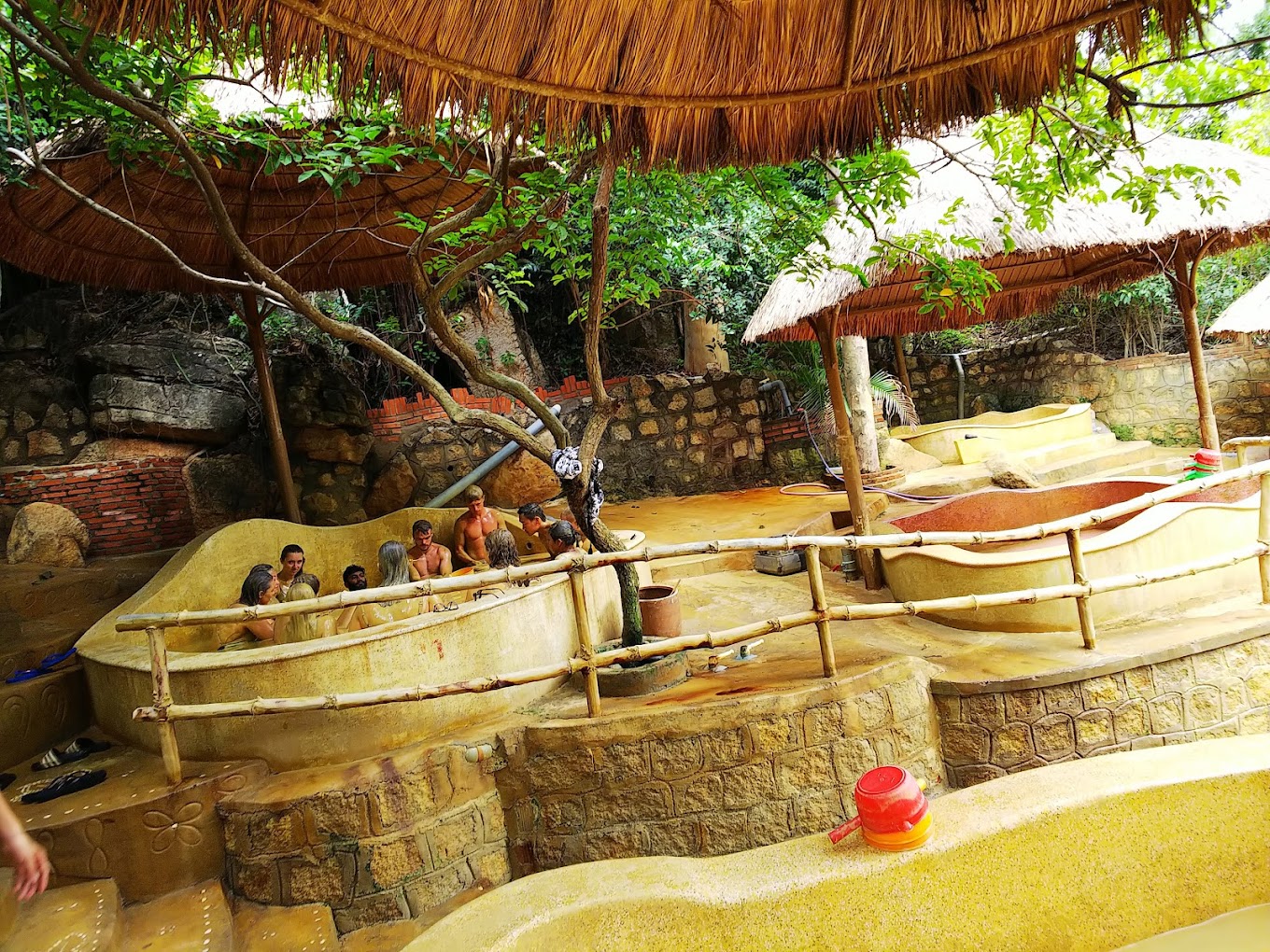Hue Royal Court Music is not only a cultural beauty but also a gathering place for the essence of our country’s music and the honor of being recognized as one of the intangible cultural heritages of humanity. Royal court music is the pride of every Hue citizen, and it is one of the priceless assets that our country Vietnam is fortunate to possess. Today, let’s explore more about this art form together with VnCarRentals.com’s.
Table of Contents
A brief overview of the Royal Court Music of Hue
Our country, along with three other neighboring countries in the Asian region, including China, Japan, and Korea, shares many similarities in literature and art, especially in the form of court music unique to each country. In our country, formal music forms are only used for performances on important occasions, such as ceremonial rituals and court events. From there, the definition of “Nhã Nhạc” (Court Music) emerged. This term refers to the combination of Ritual and Music.
Proud of Hue Royal Court Music – One of humanity’s intangible cultural heritages Hue Royal Court Music is the pride of the people of the ancient capital.

Simply put, Nhã Nhạc is a term that encompasses various genres of music, dance, and drama, often performed in ceremonial rituals, court ceremonies, and national holidays organized by the court. Typically, these occasions also provide moments for the king and the royal family to enjoy leisure and entertainment. During the Ho dynasty, the term Nhã Nhạc began to be used to refer to court music in general and court ritual music in particular. Occasionally, this term is also used to refer to a specific musical organization or ensemble.
On November 7, 2003, Hue Royal Court Music – a scholarly form of music, became a symbol of official court music recognized by UNESCO and was listed on the Representative List of the Intangible Cultural Heritage of Humanity, honoring it as an Intangible Cultural Heritage in the serene heart of the ancient capital. This is one of the bright spots on the tourism map of the ancient capital, making Hue an ideal destination alongside a series of historical sites in Hue imbued with nostalgia and the romantic Perfume River.
If you’re in Da Nang and want to find a same-day trip to visit Hue, you can book the Da Nang to Hue day trip service or Danang To hue Car Rental from VnCarRentals.com. With our private car rental service, you can save time, and customize your trip according to your preferences.
Understanding the history of the formation and development of Hue Royal Court Music
Formation history of Hue Royal Court Music
In the timeline of Vietnamese Court Music, there is a clear process of formation and development, meticulously recorded with each period. Generations have continuously passed down, preserved, and relentlessly developed, supplemented, and created to make this art form richer, more sophisticated, and reaching its peak during the Nguyen dynasty.
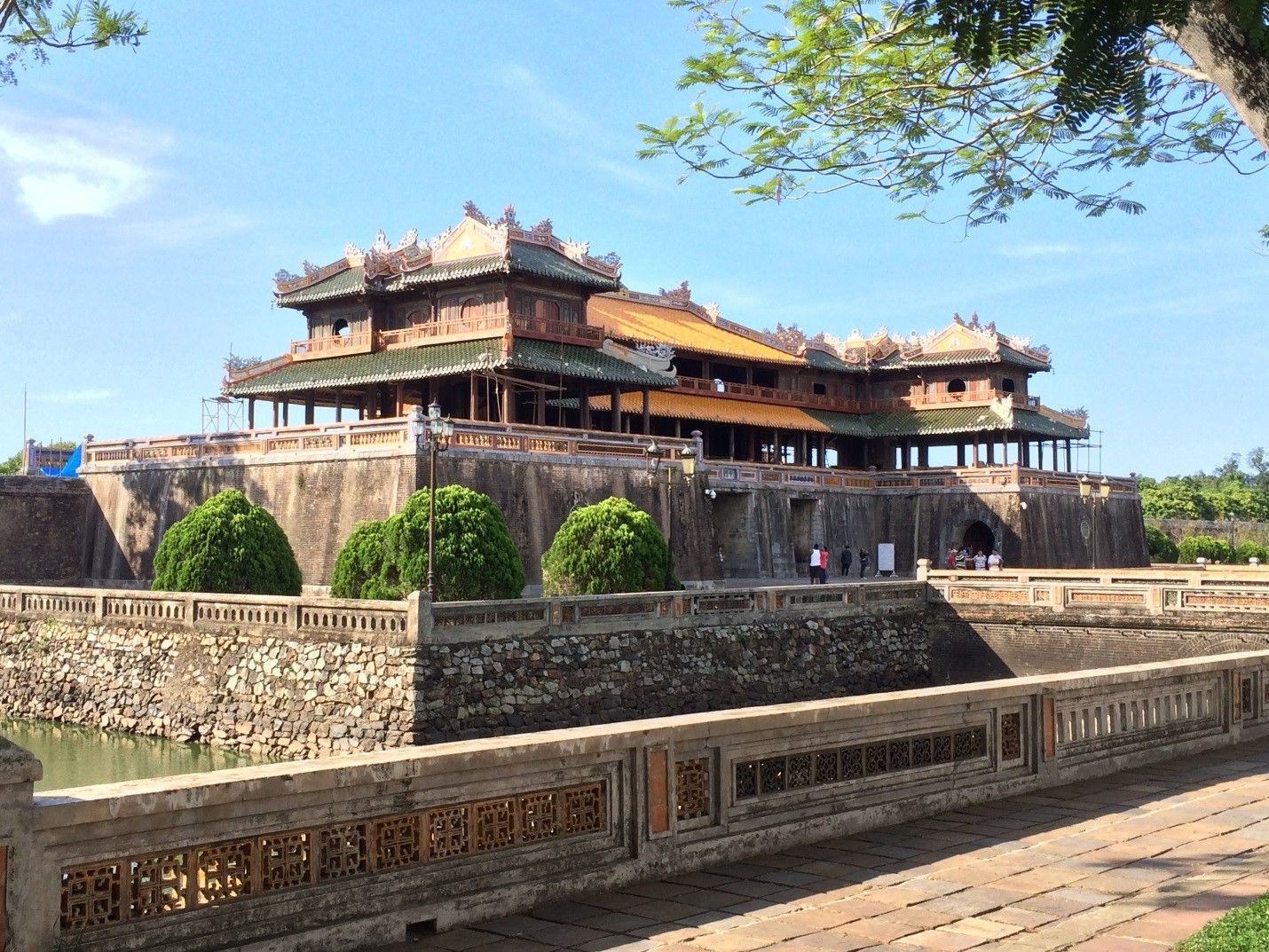
According to historical records, Vietnamese Court Music appeared in our country during the Ly dynasty (1010 – 1225) and gradually became more formalized over time. It was originally a form of court music, symbolizing the existence and prosperity of feudal power. Therefore, Court Music always had to ensure elegant lyrics and melodies that exuded the noble demeanor inherent in the royal family.
Development process of Hue Royal Court Music
Appearing in our country from the 13th century under the Ly dynasty, Hue Royal Court Music had a clear development process, closely associated with different dynasties throughout our country’s history. During the Le dynasty (1427 – 1788), Hue Royal Court Music became an art form exclusively for the nobility and scholars, with a complex and tightly structured organization, clear and detailed regulations. This period also saw the establishment of various subgenres of Court Music, including Court Ritual Music, Temple Ritual Music, Monthly Ritual Music, Grand Court Music, Regular Court Music, Grand Banquet Music, etc. Although it achieved certain success during this period, Court Music did not maintain continuous development. Towards the end of the Le dynasty, Court Music entered a period of decline due to various reasons.
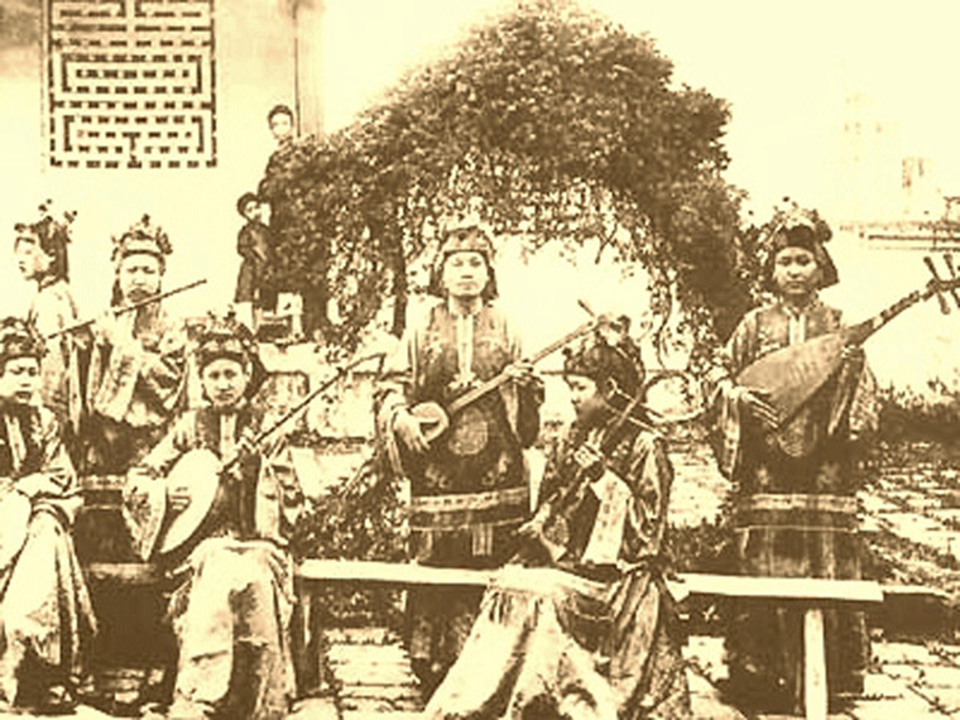
Hue Royal Court Music truly flourished and was organized more systematically than ever during the Nguyen dynasty (1802 – 1945), especially from the first half of the 19th century. At this time, as the new rulers in the South, the Gia Long court knew how to use the art of music to ‘nourish the spirit.’ This was also when the name “Hue Royal Court Music” became associated with the Hue court and developed according to the norms and standards set by the monarchy.
The Nguyen dynasty period is considered an important preparation stage, laying the groundwork for the development of court music in later reigns. From this time onwards, this art form became systematic, well-organized, with hundreds of musical scores and lyrics written in Chinese characters.
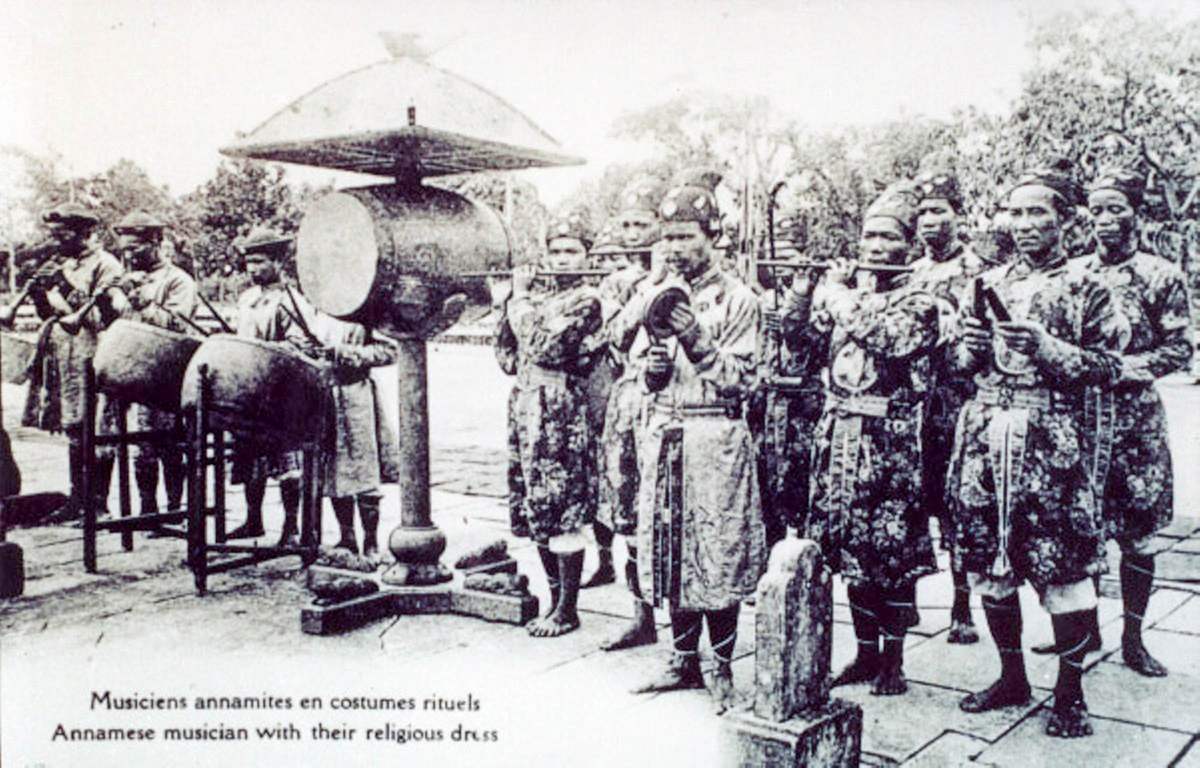
At this time, Hue Royal Court Music was honored by the court and the people as the official music, the national music. Therefore, only on significant occasions, with great significance such as the Heaven Worship Ceremony at Dan Nam Giao, Tế Xã Tắc ceremony, coronation ceremonies, longevity celebration of the king, welcoming ceremonies for envoys, etc., did the court organize performances of Court Music in the capital city of Hue. Furthermore, the reason why Court Music of this period is called Hue Royal Court Music is because this dynasty established its capital in Hue for nearly 150 years.
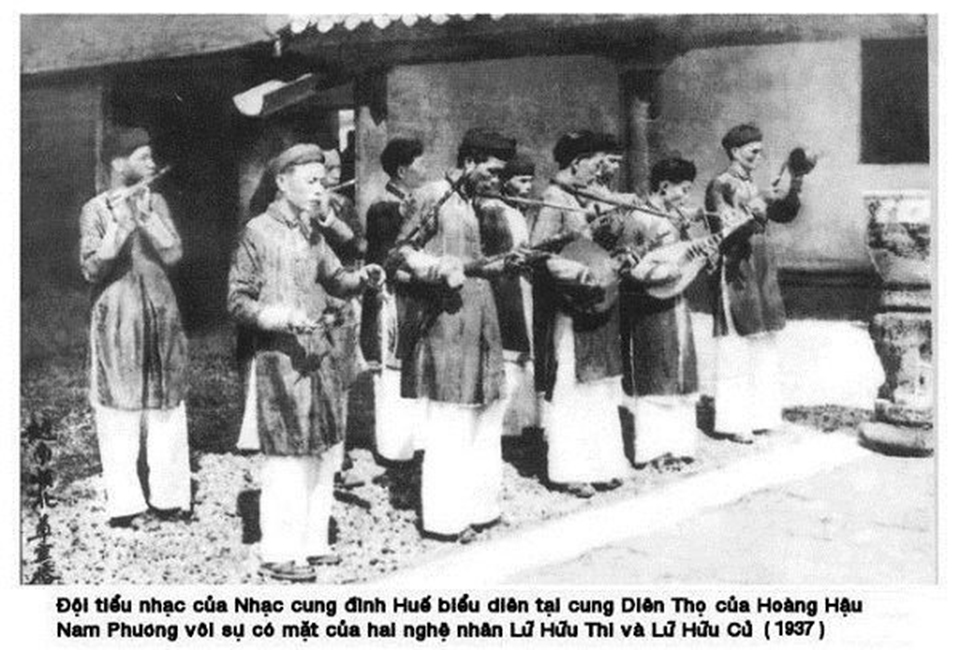
The chamber music ensemble performing at Queen Nam Phuong’s Dien Tho Palace
However, despite its strong development during the Nguyen dynasty, Hue Royal Court Music was once seriously threatened by the emergence of new musical instruments and Western music. Additionally, another factor that strongly affected the position of Hue Royal Court Music was the historical events when the last feudal dynasty of our country officially collapsed in 1945. Nevertheless, despite the ups and downs over the years, Hue Royal Court Music still remains intact, preserving its uniqueness, elegance, and sophistication since its early days.
The great artistic value of Hue Royal Court Music
The value of Hue Royal Court Music comes from its musical structure
Most of the musical pieces of Hue Royal Court Music are composed by the Department of Ceremonies. Depending on the nature of the ceremonies, the musical pieces vary. For example, the Giao ceremony has 10 musical pieces symbolizing success. On the other hand, the Tế Xã Tắc ceremony has 7 musical pieces symbolizing the desire for a good harvest. The Tế Miếu ceremony has 9 musical pieces symbolizing harmony. The Tế Lịch Đại Đế Vương ceremony has 6 musical pieces symbolizing wisdom. The Lễ Đại triều ceremony uses 5 pieces symbolizing peace. The Lễ Vạn Thọ ceremony uses 7 pieces symbolizing longevity, and the Lễ Đại Yến ceremony uses 5 pieces symbolizing blessings.

In the early period of King Gia Long’s reign, the court inherited the form and structure of Hue Royal Court Music with Giao music, Miếu music, Ngũ tự music, Đài triều music, and the Department of Ceremonies added other types of music such as Huyen music, Ty Truc Te Music, Ty Chung, Ty Khanh, and Ty Co to suit the new court ceremonies.
Organization of musical instruments
According to regulations, Hue Royal Court Music has 6 types of orchestras, including Nhã nhạc, Nhạc huyen (hanging music), Đại nhạc (grand music), Tiểu nhạc (small music), Ty chung, and Ty khánh (bell and stone orchestra) along with the Military band. There are no less than 30 types of musical instruments with hundreds in quantity such as barrel drums, castanets, flutes, huyền tử lute, two-stringed fiddle, three-stringed lute, sets of bronze bar chimes, etc.
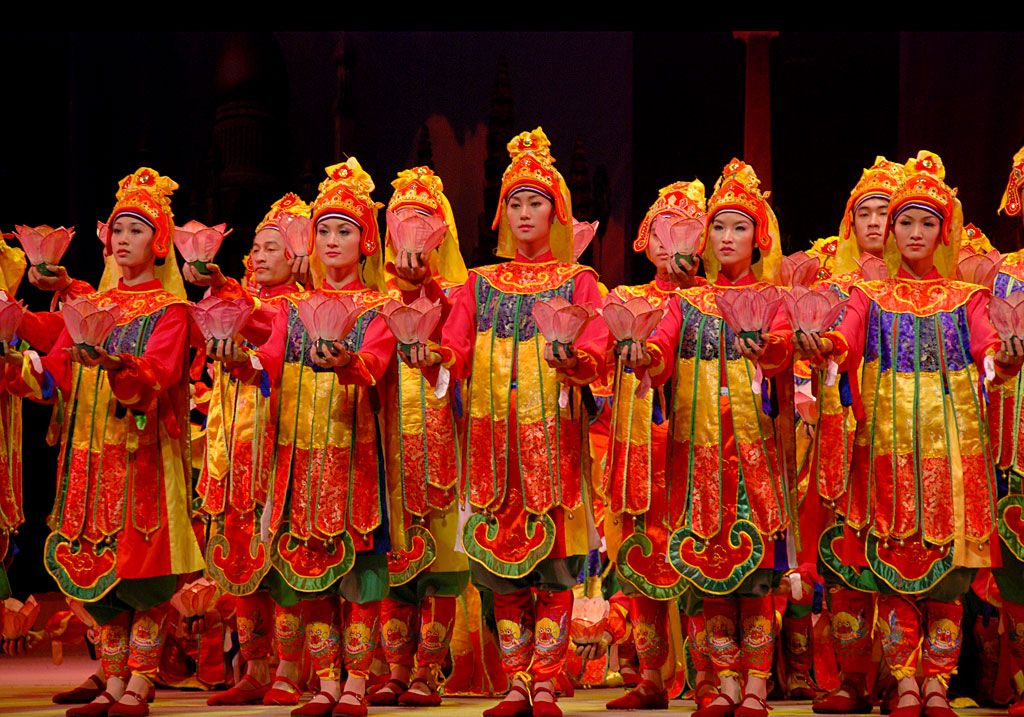
Hue Royal Court Music combined with court dance
Not only Hue Royal Court Music, but during the Nguyen dynasty, court dance was also developed extensively, diversely, and abundantly with various dances such as dragon dance, phoenix dance, butterfly dance, lantern dance, fan dance, etc. Departments such as the orchestra, musical instruments, musical pieces, and lyrics were all performed by the most talented musicians, singers, and dancers from all over the country.

If you have the opportunity to visit the ancient capital during your journey to explore the romantic Hue, don’t miss the chance to admire the graceful dances, rhythmic music, cleverly combined with delicate and elegant Hue Royal Court Music, fully showcasing the beauty of Vietnamese cultural identity.
Efforts to preserve Hue Royal Court Music in the dreamy land of Hue
The preservation of Hue Royal Court Music has always been emphasized in recent years. Currently, the Hue Royal Traditional Theater has preserved some important court music pieces, including 10 Ngự pieces such as Snowflakes, Yuan Xiao, Ho Quang, Lien Hoan, Binh Ban, Tay Mai, Kim Tien, Xung Phong, Long Ho, Tau Ma, Long Dang, Long Ngam, and Tiểu Khúc, etc.
Not only preserving and restoring musical works, but the theater also regularly organizes performances through various forms of interpretation on occasions such as the Hue Festival, Buddhist festivals, folk festivals, chamber music concerts, etc. If you have the chance to visit, you can also take a stroll around the exhibition area that details Hue Royal Court Music through costumes, masks, various types of materials, and musical instruments.
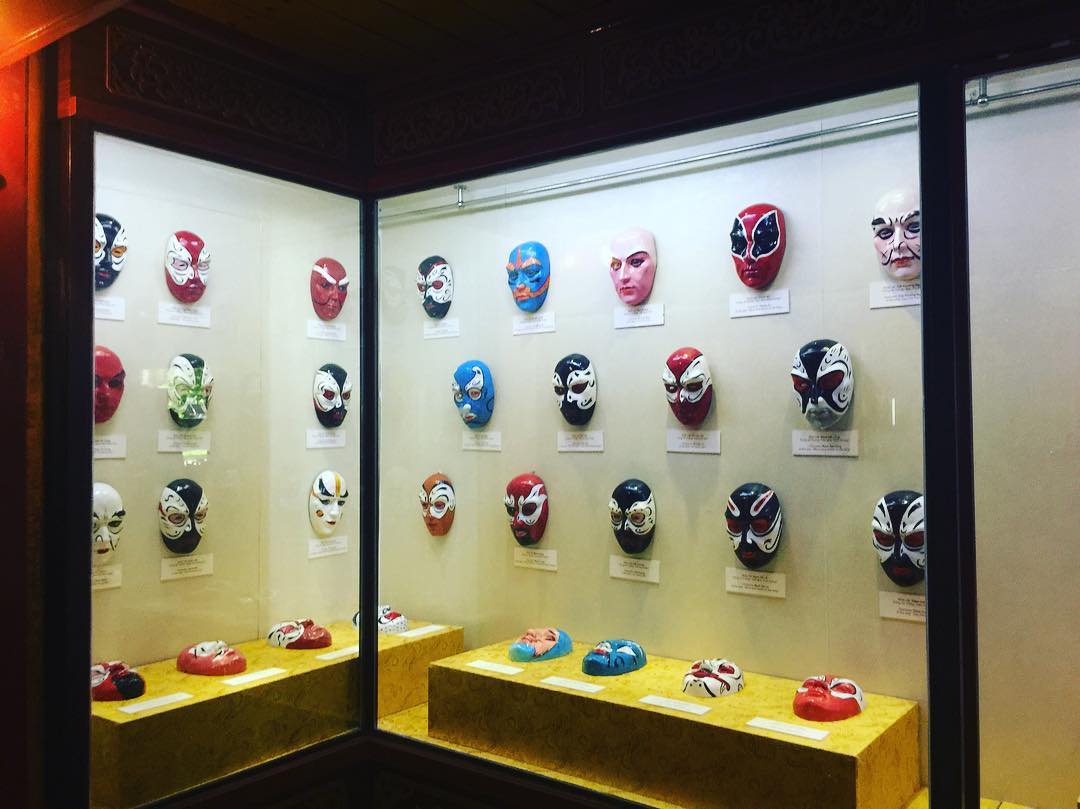
The artifacts displayed at the Hue Royal Traditional Theater today
Hue Royal Court Music is an invaluable spiritual gift that previous generations have left in the peaceful ancient capital. If you have the opportunity to visit the land of Perfume River and Ngu Mountain, don’t miss the chance to immerse yourself in the melodious tunes of Hue Royal Court Music. Don’t forget to use the private car rental service in Hue from VnCarRentals.com for the best exploration of Hue.


